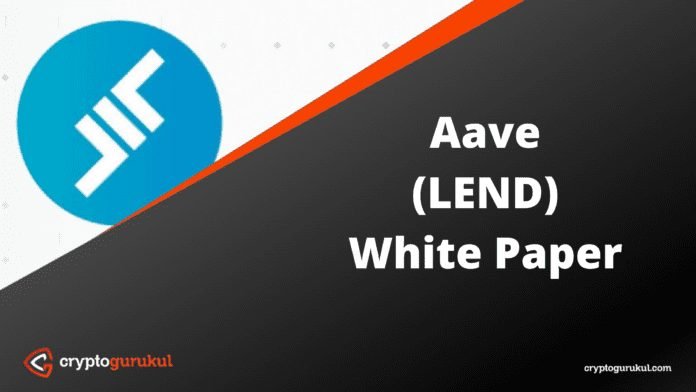
Quick jump
Hello and welcome to this blog post about Aave LEND White Paper. I am very excited to know that you are interested in this amazing technology, you will be going to amazed by the incredible potential of the blockchain.
There is a lot to learn about this futuristic tech, lets get started to dive into the Aave LEND white paper and start to leverage it to build a more secure and trusted ecosystem for Industry 4.0 applications.
The aim of this blog post is to help you quickly understand about the philosophy behind the Aave (LEND).
I can ensue you that, you will be able to understand every bits and pieces related to Aave (LEND) after going through the Aave LEND white paper.
Without wasting any further time lets get started to dive right in and lets understand white paper first.
What is white paper?
A white paper is an informational, influential, well-structured document, usually published by an organization, to provide in-depth information about a specific solution.
A white paper is used to provide a good insight into the challenges for a specific problem and a proposed solution for the same.
Aave LEND White Paper
Aave LEND white paper will be going to provide you, all the information that is needed to get started with Aave (LEND), including the inspiration for creating, the problem it is trying to solve and the solution proposed by Aave (LEND).
Introduction
“The birth of the Aave Protocol marks Aave’s shift from a decentralized P2P lending strategy (direct loan relationship between lenders and borrowers, like in ETHLend) to a pool-based strategy.
Lenders provide liquidity by depositing cryptocurrencies in a pool contract. Simultaneously, in the same contract, the pooled funds can be borrowed by placing a collateral.
Loans do not need to be individually matched, instead they rely on the pooled funds, as well as the amounts borrowed and their collateral. This enables instant loans with characteristics based on the state of the pool.”
Aave is a decentralised non-custodial liquidity market protocol where users can participate as depositors or borrowers. Depositors provide liquidity to the market to earn a passive income, while borrowers are able to borrow in an overcollateralised (perpetually) or undercollateralised (one-block liquidity) fashion.
The Aave Protocol marks a shift from a decentralised P2P lending strategy (direct loan relationship between lenders and borrowers, like in ETHLend) to a pool-based strategy. Loans do not need to be individually matched, instead they rely on the pooled funds, as well as the amounts borrowed and their collateral. This enables instant loans with characteristics based on the state of the pool.
The following paper describes the key functionalities that differentiate the Aave Protocol V2 from V1. The main driver for the development of Aave V2 was to improve the sub-optimal solutions implemented in V1, precisely:
• Inability to upgrade the aTokens
• Gas inefficiency
• Architecture simplification favoring automated testing through fuzzers and formal verification tools
• Code simplification
Some of the solutions currently implemented in V1 were designed and developed when the Ethereum Network was notably different. The exponential growth of DeFi has grown the number of transactions twofold, with further pressure from increased gas costs due to the Istanbul release.
White Paper Link: Aave LEND White Paper
That’s all for this blog post.
It will be great if you can help me to spread the word about this Aave LEND white paper by sharing this post.
If you have any questions related to the Aave (LEND) or need some further information or have some specific queries, feel free to ask your questions in Comment Section.
I monitor this section very closely and answer all your questions as fast as possible.
Also keep visiting us, as we keep on adding new content very frequently. You can also follow us on social media to get frequent updates.